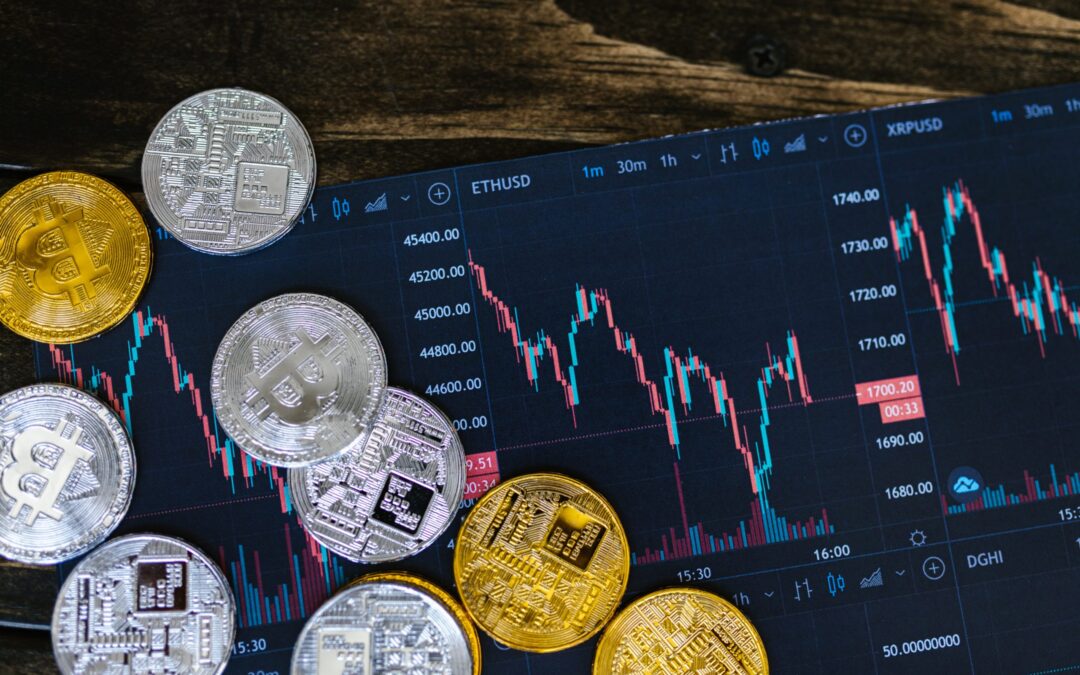If you’ve heard of NFTs, Cryptocurrencies, or Blockchain technology (and as you’re using the Internet to read this, we’ll assume you have), you’re aware that the past year has been tumultuous, at best. NFT projects have varied greatly in their success, cryptocurrencies have been nearly reliable as a 1987 Yugo, and Blockchain’s reputation has suffered.
Regarding Blockchain technology, it’s the platform on which Web3 technology is built; there’s an excellent article by Eric Yaillen on this site about how it relates to your business here. We also covered the basics a couple of months back in a report. Blaming Blockchain for the wildly unpredictable nature of NFTs and cryptocurrencies is akin to blaming the highway for a motor vehicle accident. But what does the future hold for NFTs and cryptocurrency specifically?
This article will discuss the nature of NFTs and Cryptocurrencies, why they’re so volatile, and what the future may hold. We are not investment advisors; this is strictly an opinion piece. Consult a professional before investing in anything; never invest in something you can’t afford to lose.
The Nature of NFTs
NFT is an acronym for “Non-Fungible Token.” Fungible is just a designation for something that can be traded or exchanged for something else precisely like it. An excellent example of this would be an ounce of gold. An ounce of gold is exchangeable for another ounce of gold; they’re the same thing with the same value. NFTs are not fungible because they’re individual files and, therefore, cannot be exchanged for another one just like it. Why they’re not called “Non-Exchangeable Tokens” is something we can only blame on intentional obfuscation.
NFTs are most commonly associated with digital works of art and the exorbitant prices paid for them. Most well-known is the $69mm price paid for an NFT collection by a digital artist called “Beeple.” The auction took place at Christie’s in early 2021, making the creator one of the world’s three most valuable living artists at the time.
Why are NFTs Volatile?
In the past, thousands of corporations have jumped on the NFT bandwagon, from McLaren to McDonald’s and from Prada to Pizza Hut. Some have been successfully planned out and launched; some haven’t. While some of the artwork distributed as NFTs has done particularly well, many more haven’t. Many still criticize it as an unregulated market, pointing out that NFTs have no intrinsic value. They’re worth exactly as much as someone is willing to pay, not one more penny.
What’s interesting with this criticism is that it’s a near-perfect reflection of the non-digital art market. “Why would someone pay $69mm for a digital NFT collection,” the critics say, “when it’s perfectly legal to look at a picture of it online?” To this, we say, “Granted.” By the same token, why would someone pay $40mm for a Picasso oil painting when they can look at it online or buy a reproduction oil print for less than one-thousandth of one percent as much?
It’s because there can be only one original Picasso, much like there can only be one original NFT. And yes, it’s worth exactly as much as someone is willing to pay.
What Does the Future Hold for NFTs?
NFTs are far more than just art. They can represent anything – physical real estate, wine, collectibles, etc. There is now a line of collectibles called Authentic Heroes that will combine artist-worn physical merchandise with NFTs to create physical and digital collectibles. NFTs can designate ownership of almost anything, and they’re starting to eliminate the need for brokers and intermediaries through direct party exchange.
In summary, NFTs are beneficial and not just for art. They’re creeping into the business world, and we’ve only scratched the surface of their applications.
The Nature of Cryptocurrencies:
There are few things besides actual explosives that are more volatile than cryptocurrencies. Bad actors, scam artists, and flat-out thieves have taken advantage of an unregulated market to rake in tremendous profits, while many who can’t afford to lose their savings did precisely that.
This has resulted in a horrible reputation for the industry and left lawmakers scrambling to control a market that most genuinely don’t understand while trying to put constraints on a system specifically designed to be decentralized and nearly impossible to control. In short, the cryptocurrency market hasn’t been pretty. It can be easily manipulated, and plenty of shady characters have made tremendous ill-gotten gains at the expense of others.
Why are Cryptocurrencies Volatile?
The very nature of cryptocurrencies is designed to be decentralized and promote anonymity. Unfortunately, as we’ve seen on many social media platforms, perceived anonymity and a lack of accountability can lead to awful behavior. More prominent cryptocurrencies are more challenging to manipulate, but smaller ventures are notoriously easy to value inflation, followed by rapid selloffs. Fortunes are made and lost overnight, often through questionable behavior.
Again, this magnifies the traditional stock markets, with far more drastic swings and worse behavior due to fewer repercussions. If one thinks that people with massive holdings don’t manipulate the conventional stock market, we suggest they investigate a few hedge funds.
What Does the Future Hold for Cryptocurrencies?
Despite the rocky history of crypto, they are undeniably used. Long-term, there will likely be a few survivors in the arena. Bitcoin is the most established and has (finally) begun to stabilize as we move toward the next halving in 2024. Ethereum has finally completed its merge, switching from Proof of Work to Proof of Stake, making the most popular blockchain network in the world faster and cheaper to use.
These and some other coins connected to blockchain networks will undoubtedly remain. “Get rich quick” coins will entice gamblers who believe they can time the market right to make a small fortune. And while the SEC and other agencies continue to seek solutions, the very nature of blockchain will likely form the most significant control measure: Community.
The community has been one of the biggest reasons Bitcoin crashed in 2022; investors making record profits by borrowing Bitcoin to buy more were forced to sell at a loss, driving the price lower. This was done by a more significant portion of Bitcoin holders shorting the coin, then selling. A community can punish uncontrolled greed.
Again, a reflection of this can be seen in traditional markets. Just ask any hedge fund that shorted AMC and GameStop stock in 2021 how fond they are of Reddit: A community therein punished hedge fund greed to the tune of $12 billion by banding together and artificially inflating the stocks.
Properly managed communities may well be the future of blockchain and general commerce.
In Summary
Blockchain and Web3, in general, are still in their infancy. There will be stumbles, failures, fraud, and unfortunate events. But there will be plenty of good to go along with the bad. Free of stigma, NFTs and cryptocurrencies are simply blocks of data. How we use them will shape the future.
And unlike the 1987 Yugo (thank goodness), they’re both here to stay. For more of MacNerd’s articles about blockchain, please visit our blog page.
- The Future of Blockchain: What’s next for NFTs and Cryptocurrencies? - September 23, 2022
- Everything You Wanted to Know About Blockchain (But Were Afraid to Ask) - June 17, 2022


Very clear explanation of Crypto Currencies and NFT’s. Coming from the Fashion Industry, where brand are jumping all over NFT’s for good reason. Women love their Barbie’s and NFT’s more closely identify with one’s alter ego.